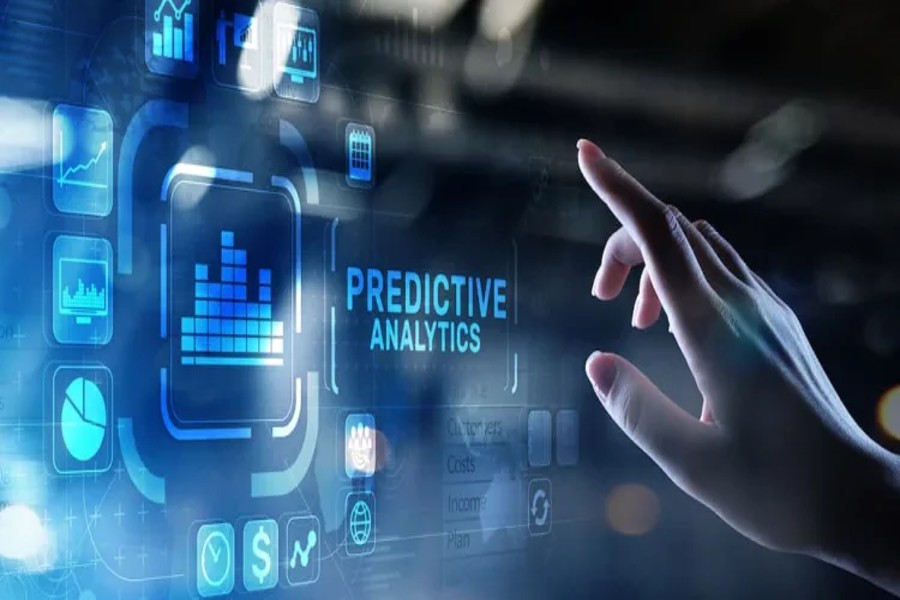Organizations Use AI For Predictive Analytics
Companies have access to more data on their clients and business operations than ever before in today’s digital and connected world. It’s possible that many businesses have experience utilizing the data gathered to forecast future data patterns. However, with so much data available, it’s become harder to produce timely and useful business insights. Artificial intelligence (AI) is the secret to success, even though predictive analytics may be the cornerstone of corporate operations.
Understanding the part computer algorithms and models play in evaluating data and making predictions can help a business drive future success when it comes to integrating AI into predictive analytics. A key component of business insight is the ability to look forward while applying lessons from the past.
In business intelligence, using artificial intelligence for predictive analytics has grown in popularity. Both large and small businesses are utilizing the developments in computer-based models, particularly artificial intelligence (AI) models, to quickly assess their sales, customer, marketing, and other data.
In the world we live in today, data is readily available in multiple formats, ready for a wide range of uses. While companies have employed predictive analytics for as long as they have gathered data, the addition of AI to the process has made it possible for enterprises to make rapid and efficient use of the enormous amounts of data at their disposal.
Difference Between Artificial Intelligence and Predictive Analytics
Asking yourself “what is predictive analytics?” is an excellent place to start when trying to comprehend AI predictive analytics. Although many people lack a solid understanding of artificial intelligence, it’s crucial to comprehend predictive analytics and how it relates to your company. What, then, is a suitable definition for predictive analytics?
Predictive analytics in data science examines future trends. Stated differently, it involves examining historical data and extrapolating future events from that data. Even though predictive analytics was feasible and employed before AI models were created, human predictive analytics techniques can require hours to get a result based on a few hundred data points.
Because AI is fast at gathering, organizing, and analyzing data, it is particularly good at performing predictive analytics. In a matter of minutes, AI predictive analytics algorithms will be able to produce a solution based on millions of data points. Naturally, artificial intelligence is capable of much more than just predictive analytics.
Key Insights
Your company may benefit greatly from digital transformation, including the application of predictive analytics and artificial intelligence (AI).
With developments in massive language models and computer vision, artificial intelligence (AI) is growing quickly and becoming more approachable.
While integrating AI in a corporate setting presents hurdles, companies can manage these difficulties by emphasizing data quality, resolving integration problems, and putting strict security measures in place.
The Rapidly Evolving World of AI and Predictive Analytics
Artificial intelligence (AI) has come a long way from the days of explicit instructions to the present era of machine learning and deep learning. Many people believe that these developments will continue.
Artificial Intelligence is not a fad. AI is spreading more widely as a result of the cloud’s expansion, which lowers the cost and increases accessibility to computing power and storage.
Computer Vision
AI is capable of comprehending visual data from its environment thanks to computer vision. Consequently, AI has an extraordinary rate of object detection and interpretation, which makes it more useful in real-world situations like autonomous driving and image recognition and analysis.
Large Language Models
The development of large language models is expected to have a major impact on AI in the future. Natural language processing has already shown the potential of models like ChatGPT. Large language models could provide ever-more-advanced capabilities as they develop, improving the usefulness of AI and assisting in its wider acceptance and applications.
Bringing AI Technology to the Masses
AI is increasingly being incorporated into already-existing tools, increasing the accessibility and usability of AI models for a larger user base.
This democratization can be compared to the development of computers, which went from being confined to secure areas to being portable devices that were accessible to the general public. Additionally, the value of AI technology increases with the number of people and organizations using it.
Navigating The Challenges of AI in Business
Effectively comprehending and applying AI in a commercial setting is a common difficulty. This entails managing data, staying up to date with the rapid advancements in AI, and comprehending how AI may be helpful.
Data Quality Concerns
The quality of the underlying data is crucial because the model can only be as good as it is. Data quality has a direct impact on the accuracy and dependability of AI models, and many businesses struggle to get their data in a format that is appropriate for AI analysis.
Integration Issues
Problems may occur when companies try to integrate AI into their current procedures and instruments. It can be difficult to integrate AI models into your current infrastructure, and careful preparation is needed to ensure a seamless installation.
AI Security Challenges
AI needs data. Make creating strong security measures a top priority in order to protect confidential data and stop illegal access. To preserve the integrity of AI-driven processes, take great care while addressing potential security issues.
Featured Image:
Source:

